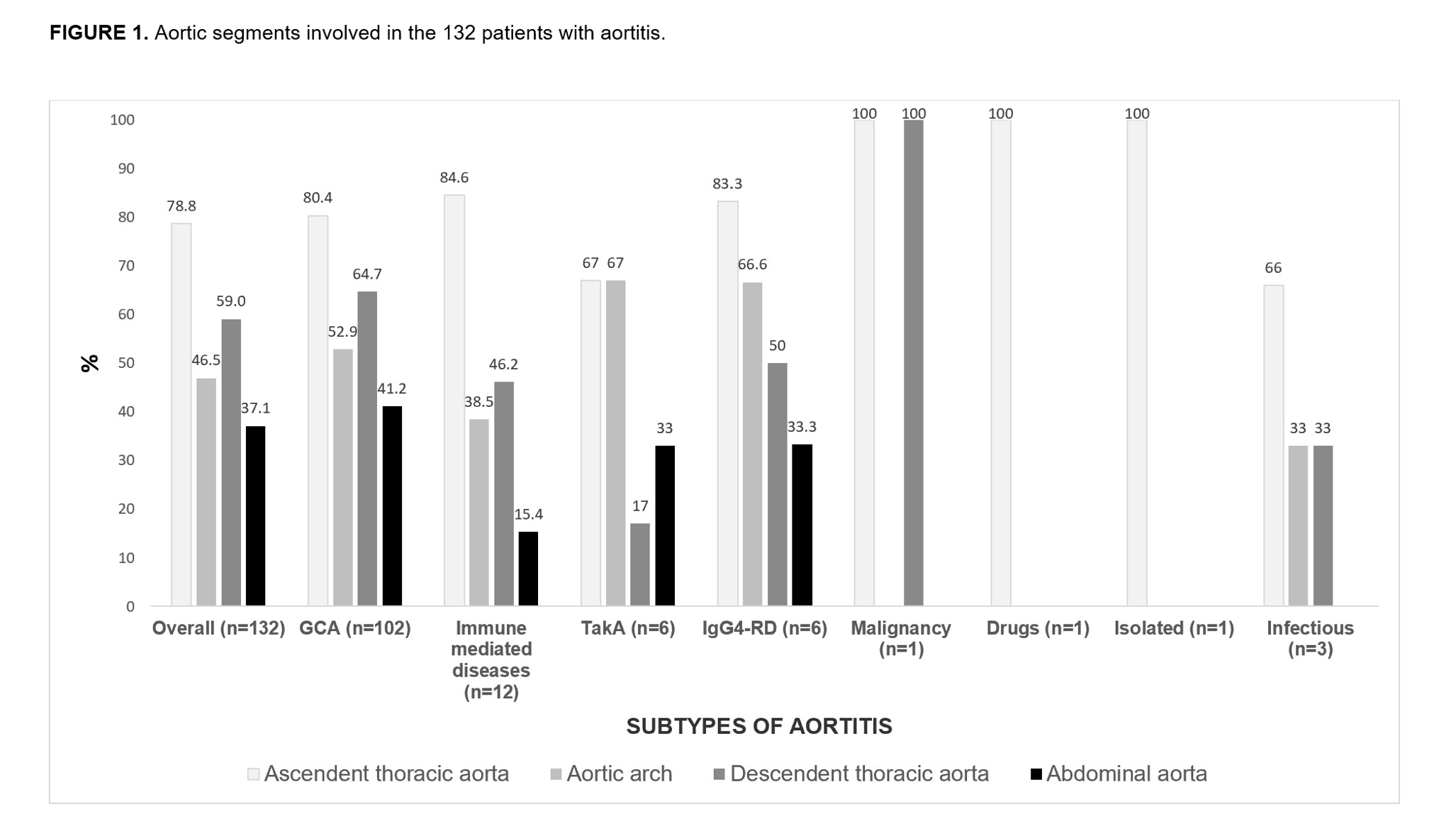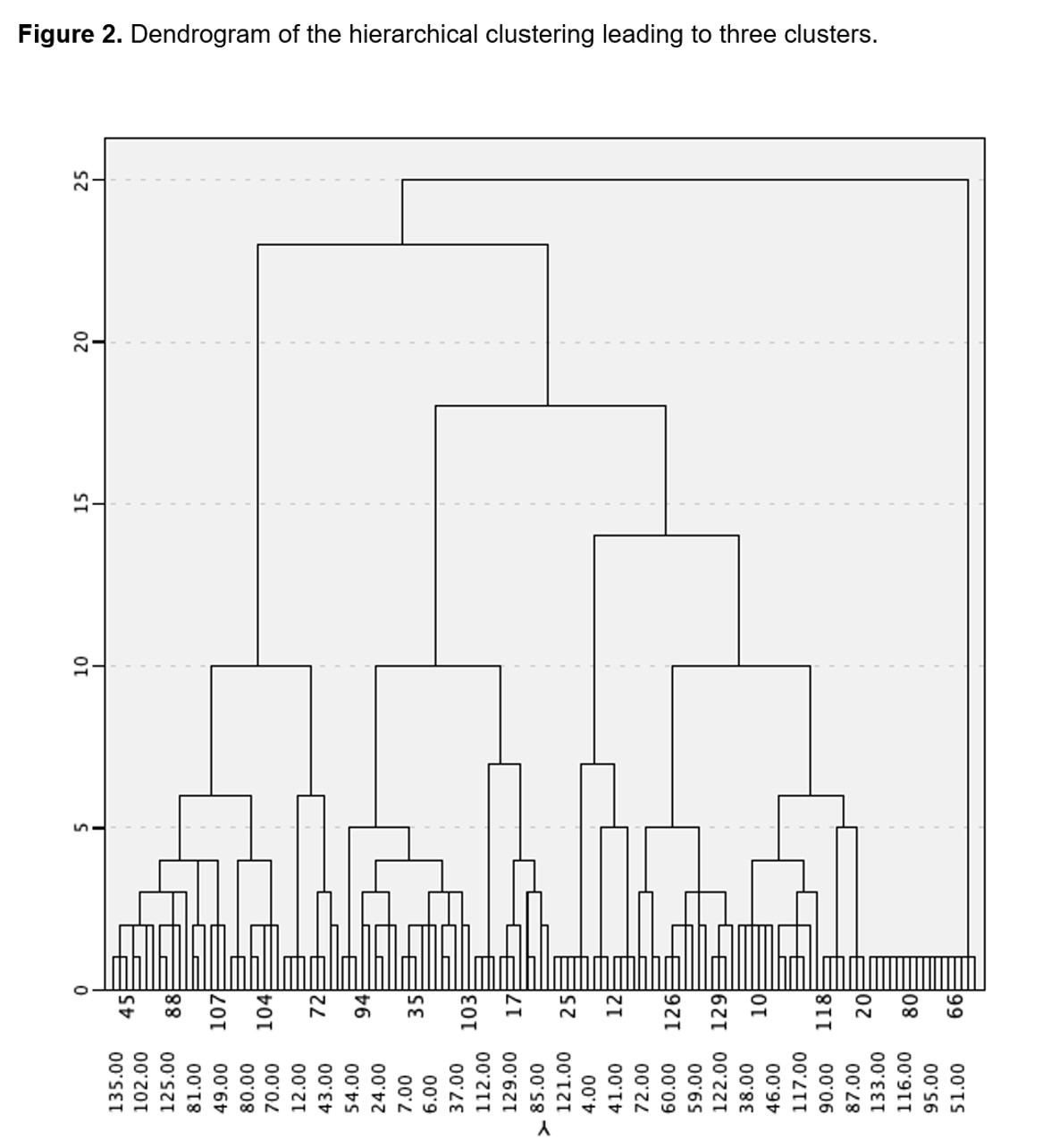Session Information
Date: Saturday, November 16, 2024
Title: Vasculitis – Non-ANCA-Associated & Related Disorders Poster I
Session Type: Poster Session A
Session Time: 10:30AM-12:30PM
Background/Purpose: Aortitis and periaortitis represent the inflammation of the aortic wall and the surrounding periaortic tissues, respectively. Both can be idiopathic or secondary to infectious and non-infectious processes, and, usually, have non-specific manifestations. Thus, early diagnosis is usually a challenge. Our aim was to assess the causes and the main features of aortitis and periaortitis from a single university center ad to identify the different phenotypes using a cluster analysis.
Methods: Observational study of patients with aortitis or periaortitis from a referral center in Spain. A model-based cluster analysis was performed. Chi-square test was used to compare categorical variables among groups. Ward method was used to create a dendrogram of the hierarchical clustering leading to three clusters: C1 (asthenia), C2 (headache) and C3 (PmR).
Results: A total of 134 patients (87 female, 47 male) with a mean age of 55.1±9.1 years were included. 132 patients were diagnosed with aortitis and 2 with periaortitis. Aortitis was associated with giant cell arteritis (n=102), Takayasu arteritis (n=6), IgG4-related disease (n=6), infectious diseases (n=3), malignancy (n=1), drugs (n=1), isolated aortitis (n=1), and other immune-mediated inflammatory diseases (IMIDs) (n=12), including Sjögren syndrome (n=2), sarcoidosis (n=2), rheumatoid arthritis (n=2), axial spondyloarthritis (n=2), inflammatory bowel disease (n=1), primary biliary cirrhosis (n=1), idiopathic lung fibrosis (n=1) and polyarteritis nodosa (n=1). Periaortitis was due to idiopathic retroperitoneal fibrosis in both cases. Diagnostic imaging techniques used included 18F-FDG PET/CT scan (n=133), computed tomography angiography (CT-A) (n=44), and magnetic resonance imaging angiography (MRI-A) (n=33) (Table 1). The ascending thoracic aorta was the most frequently involved segment (78.8%) (Figure 1). The most common clinical manifestations were polymyalgia rheumatica (52.2%) and asthenia (53.7%), followed by limb claudication (23.9%) and inflammatory back pain (26.9%). Acute phase reactants were usually elevated. Three clusters were observed in patients with aortitis (not included periaortitis): C1 (60.6%), C2 (26.5%), and C3 (12.9%). General manifestations were predominant in C1, including asthenia (68.7%), weight loss (38.7%), and hyporexia (27.5%). Cranial ischemic manifestations were more frequent in C2, with headache (74.3%), temporal artery abnormalities (28.6%), jaw claudication (31.4%), and visual alterations (40%). Polymyalgia rheumatica was predominant across all clusters, ranging from 100% in C3 to 48.7% in C1. (Figure 2).
Conclusion: Aortitis is a relatively common condition associated with various underlying entities. Its clinical presentation is often non-specific, leading to frequent delays in diagnosis. Aortitis is highly heterogeneous, with diverse clinical manifestations. Cluster analysis can be used to identify clinical patterns.
To cite this abstract in AMA style:
Secada Gómez C, Loricera J, Martín-Gutiérrez A, Lopez-Gutierrez F, Nuñez-Sayar M, Ucelay-Aristi A, Martinez-Rodriguez I, Ferraz-Amaro i, Castañeda S, Blanco-Alonso R. Clinical Characterization of Aortitis and Periaortitis in a Cohort of 134 Patients from a Single Universitary Center. A Model-based Cluster Analysis [abstract]. Arthritis Rheumatol. 2024; 76 (suppl 9). https://acrabstracts.org/abstract/clinical-characterization-of-aortitis-and-periaortitis-in-a-cohort-of-134-patients-from-a-single-universitary-center-a-model-based-cluster-analysis/. Accessed .« Back to ACR Convergence 2024
ACR Meeting Abstracts - https://acrabstracts.org/abstract/clinical-characterization-of-aortitis-and-periaortitis-in-a-cohort-of-134-patients-from-a-single-universitary-center-a-model-based-cluster-analysis/



